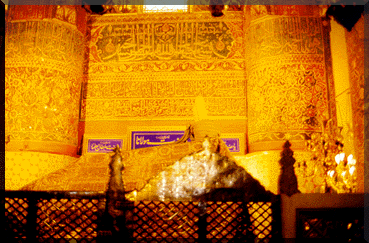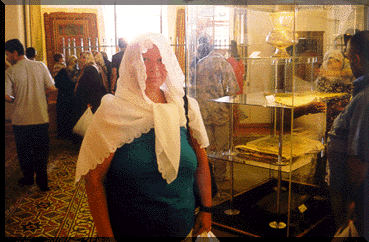Inside the building on the right hand side of the hall, which is roofed by three domes, there are 55 graves belonging to Mevlana’s male relatives and dignitaries. Right under the center of the green dome lies a sarcophagus of blue marble made for Mevlana and his son Sultan Veled, made as a present by Suleyman the Magnificent. The blue marble sarcophagus is covered with a fine cloth with verses of the Koran embroidered in gold thread, a gift of Sultan Abdulhamit II in 1894.

The small mosque section which is entered through a small door, was built during the reign of Suleyman the Magnificent. Valuable samples of calligraphy, illuminated manuscripts and book bindings as well as fine examples of Turkish carpets are on display. There is one silk carpet in the collection with 144 knots per square centimeter (924 knots per square inch) which is considered to be the most expensive carpet in the world.

A fine example of Calligraphy, Mevlana Museum, Konya
